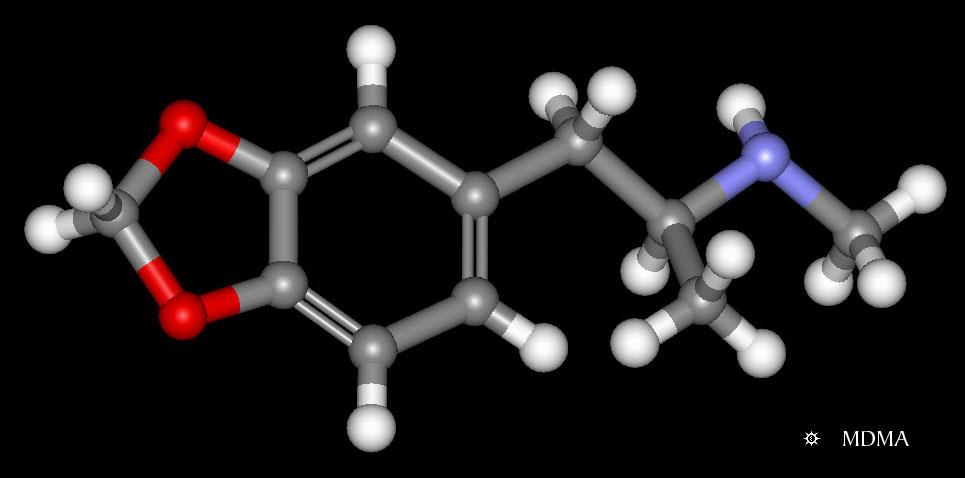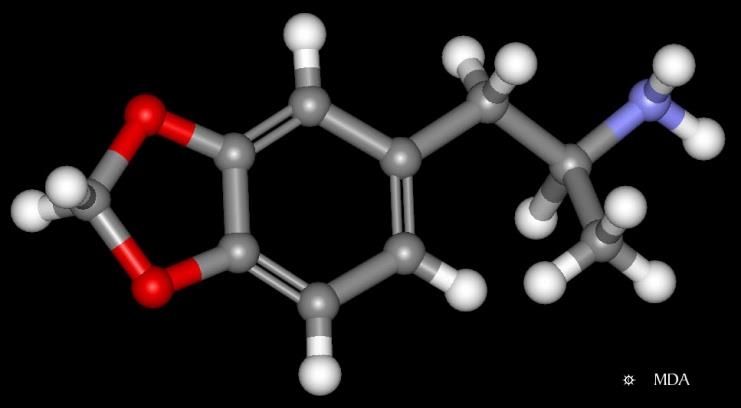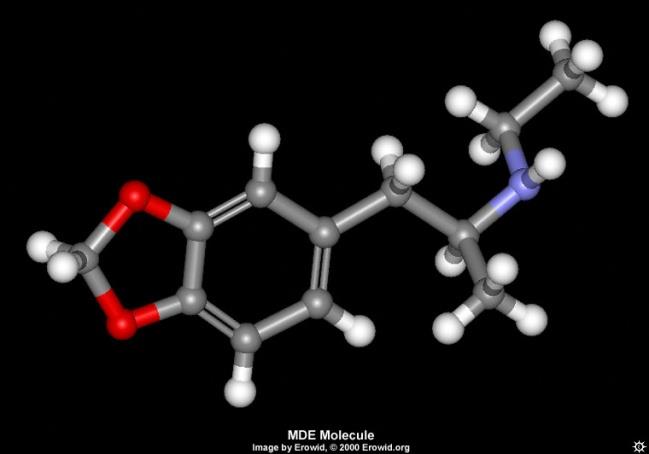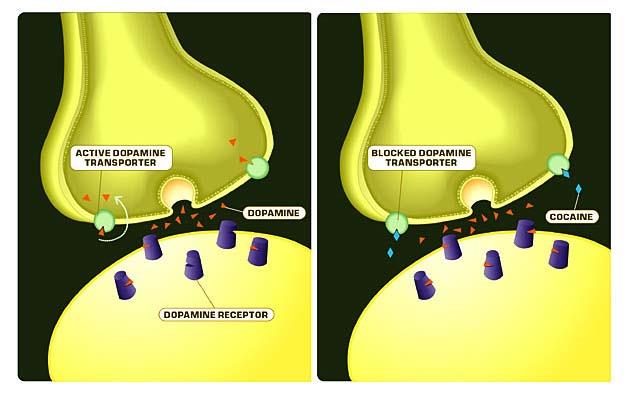
Psychosis and methamphetamine
Tim Guimond, MD, FRCPC, MSc, PhD (cand)
Clinician-Investigator, Mental Health Service
St. Michael's Hospital
Lecturer, Department of Psychiatry
University of Toronto
• Science about the drug• Musings about the community reaction• Clinical issues:
– Psychosis– Intertwining with sex– Harm reduction strategies– Treatment

Structure of dopamine





Structures of amphetamines
• Methamphetamine appeared as a recreational drug
• Can be ingested, smoked or used intranasally or
– Dependence is related to speed of onset of effects with
• Half life is 12 hrs in serum (range 9-13 hours)• CNS stimulation for 6 to 24 hours• Two isomers – the d-methamphetamine is more
Urbina, A and Jones K. HIV/AIDS 38 (2004) 890-894

Dopamine Transporter
Methamphetamine II
• Sympathomimetic – presynaptic release of dopamine
and norepinephrine and some direct postsynaptic catecholamine receptor stimulation
• Also inhibits monoamine oxidase (MAO)• May also result in tachycardia, hypertension,
intracranial hemorrhage, seizures, arrythmias, hyperthermia
• Inability to gain a full erection – may lead men to
abuse drugs used for treating erectile dysfunction (Mansbergh et al 2006)
Urbina, A and Jones K. HIV/AIDS 38 (2004) 890-894
Methamphetamine III
• Many routes of administration – oral (67.2%
bioavailability), intranasal, injection, inhaled (i.e. smoked – 90.3% bioavailability)
• Of particular concern are the toxicity of
contaminants from cladestine synthesis:
which are pro-convulsants
– Lead has also been implicated in 2 cases of intoxication –
gastroenteritis, anaemia, encephalopathy, myalgias or hepatitis
• Why does this drug cause so much panic
– Panic does not generally engender a successful
– What about those people who use methamphetamine
and do NOT develop dependence
• Stimulant drugs have fewer treatment options• The dependence on stimulants does not seem to
be mediated by withdrawal
• The role of dopamine – not reward but salience
Overview - Psychosis
– Hallucinations
• Visual, Auditory, Tactile• Illusions
– Thought Content
• Delusions: Bizarre & non-bizarre
– Thought Process
• Circumstantial – Tangential – Loose Associations
• Responding to psychosis• Treatments

Tips to deal with psychosis
• Focus on the emotions not the delusions or
the content of the voices
• Focus on trying to get through this, reminding
oneself that it is ‘worse' because of the drugs
• Keep your voice soothing, be gentle• Pause and allow time for the person to gather
their thoughts, but if they seem distracted gently help them refocus
Thought Process Exercise
• Pick 1 person to play the role of client• Pick 1 person to play the role of caregiver/outreach
• Pick 2 individuals to be voices• Pick 1 or 2 observers of the client, their speech,
behaviours and coherence of the conversation
• Pick 1 or 2 observers of the worker• The ‘worker' describes the setting they work in the
‘client' is to come in and ask for the usual services that
might be provided, and the client tries to seek help
with their ‘situation' (client decides: needs more clean
needles, wants to stop, wants the voices to go away.)
Thought Process Exercise 2
• The voices sit on either side of the ‘client' and
whisper in his/her ear the entire time
– Begin using grandiose delusional statements:
• For example: "You are amazing. Madonna wants you in her
next video. You have a cure for addiction. If only people who
use crack could start using meth then they would be cured.
Tell her your ideas." be directive.
– When the bell rings one of you switches to paranoid
delusional thoughts:
• For example: "The FBI is following you. Your dealer has been
monitoring your movements. Your phone is bugged." Again,
be directive and make fearful statements about the worker.
– When the bell rings again, both switch to paranoid
• Symptoms tend to be:
– Paranoid ideation– Ideas of reference– Delusions of persecution– Auditory AND visual hallucinations
• Those with > 5 years MA use may be at higher risk of
developing a "persistent" form of psychosis
• The role of sleep deprivation is also cited by some as a
• Important to distinguish from people who suffer from
schizophrenia and use methamphetamine, which may
also worsen their psychosis (PRISM)
Glasner-Edwards S, Mooney LJ. Methamphetamine Psychosis: Epidemiology and Management. CNS Drugs (2014) 28:1115-1126.
Treatments for psychosis
• Good diagnosis is needed:
– substance intoxication vs. substance induced vs.
primary psychotic disorder
• Behavioural treatments aimed at:
– Abstinence– Reduction in use
• Anti-psychotic medication
– very small trials; some clinical observations that DRD2
blockade may induce anhedonia and increase relapse
Methamphetamine and Sex
Reasons people may have sex on meth• It feels good• Certain contexts include methamphetamine
– Sex scenes: ‘pig sex', fisting, bareback
• Sex trade• Managing impact of sexual abuse or
guilt/shame associated with sex
Tips in reduction/recovery when sex
overlaps with methamphetamine use
Sex therapy principles are key:• Reductions or abstinence from methamphetamine may
need reduction and abstinence from some sex acts
– Cast this as a holiday, a rest, a vacation
• Changing to new associations, changing sexual activities
and or settings, re-programming our sexual pleasure
– Explore new activities without meth
• Understand the connections – do a functional analysis
(what is the drug doing, when are you using it, what
prompts it, what extends it)
• Avoid triggering situations initially, learn alternate ways to
– Avoid usual places and types of sex
• Route of administration based:
– Instructions on safer injection and inhalation
– Sterile syringes, one's own pipe
• Converting to a route with slower onset may
help with dependency forming risk (swallowing, snorting or hooping)
• Testing drugs• Planning use, enforcing a sleep/rest schedule
– Matrix Model (16 week model)
• CBT + family education + self-help participation• Focused on relapse prevention, drug avoidance, identification of
triggers and drug refusal
– Contingency management
• Community Reinforcement?• Cognitive behavioural therapy?
• Reduction in use• Symptom management
– Anti-psychotic medication– Benzodiazepines
Courtney KE, Ray LA. Methamphetamine: An update on epidemiology, pharmacology, clinical phenomenology , and treatment literature.
Drug and Alcohol Dependence (2014) 143:11-21.
• Pharmacologic agents to reduce use:
– buproprion (mild but not heavy users)– modafinil (with HIV + gay men, did not reproduce
in further studies)
– naltrexone (2 trials – one oral, one injectable)– mirtazapine (combined with CBT with MSM)– topiramate (helped a subgroup who achieved
abstinence sustain it)
Courtney KE, Ray LA. Methamphetamine: An update on epidemiology, pharmacology, clinical phenomenology , and treatment literature.
Drug and Alcohol Dependence (2014) 143:11-21.
• Pharmacologic agents to reduce cravings:
– ondansetron, methylphenidate, flumazenil +
gabapentin + hydroxyzine, modafinil, topiramate, isradipine, aripriprazole and sertraline have all been tested
• none were effective, the last two increased or
sustained cravings
– others are still being tested: bupropion, nicotine,
Courtney KE, Ray LA. Methamphetamine: An update on epidemiology, pharmacology, clinical phenomenology , and treatment literature.
Drug and Alcohol Dependence (2014) 143:11-21.
• Psychosocial treatments have had the best
• Structured treatments that focus on
understanding the context of use, actively
working to change the context and promoting
reward for non-use seem to be important
• My experience with the psychiatric co-
morbidities makes me suspicious that those with
early childhood trauma are at greatest risk and
benefit from trauma-focused therapy
Source: http://wgdrugstrategy.ca/wp-content/uploads/2011/11/MethamphetaminePresentationTimGuimond.pdf
Draft 2014Activity Document OctOber 2013 International Life Sciences Institute TABLE OF CONTENTS Draft 2014 Activity Document – October 2013 Draft 2014 Activity Document – October 2013 Foreword Draft 2014 Activity Document – October 2013 FOREWORD BY THE EXECUTIVE AND SCIENTIFIC DIRECTOR
Morehouse College Student-Athlete Handbook Academic Year 2014-15 Andre Pattillo Director of Athletics Morehouse College Maroon Tigers TABLE OF CONTENTS Athletic Director's Welcome Athletic Department Mission Statement Athletic Department Administration & Coaching Staff Athletic Department Policies Academic Resources Morehouse College Student Code of Conduct 9 Athletic Academic Support 10-11 Student-Athlete Advisory Committee (S.A.A.C)












